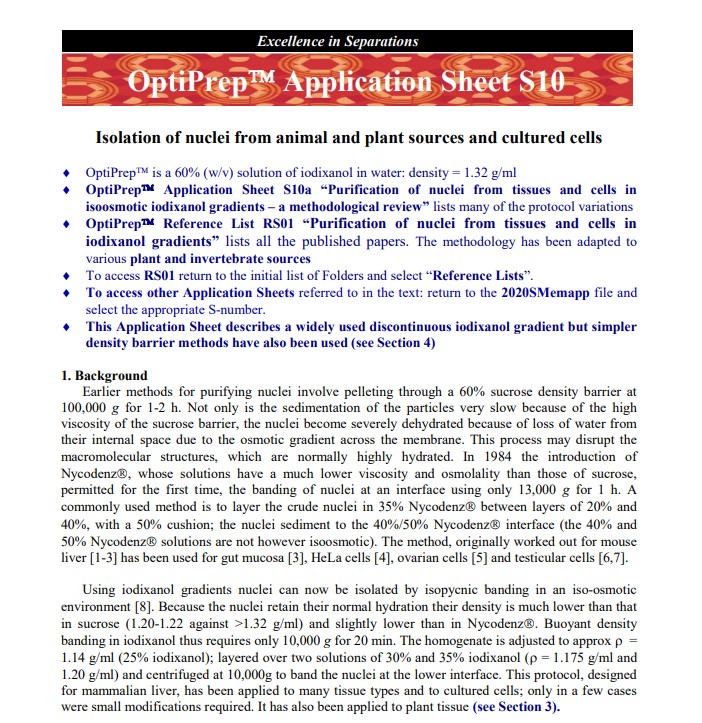Isolation of nuclei from animal and plant sources and cultured cells

Earlier methods for purifying nuclei involve pelleting through a 60% sucrose density barrier at 100,000 g for 1-2 h. Not only is the sedimentation of the particles very slow because of the high viscosity of the sucrose barrier, the nuclei become severely dehydrated because of loss of water from their internal space due to the osmotic gradient across the membrane.
This process may disrupt the macromolecular structures, which are normally highly hydrated. In 1984 the introduction of Nycodenz, whose solutions have a much lower viscosity and osmolality than those of sucrose, permitted for the first time, the banding of nuclei at an interface using only 13,000 g for 1 h.
A commonly used method is to layer the crude nuclei in 35% Nycodenz between layers of 20% and 40%, with a 50% cushion; the nuclei sediment to the 40%/50% Nycodenz interface (the 40% and 50% Nycodenz solutions are not however isoosmotic).
The method, originally worked out for mouse
liver [1-3] has been used for gut mucosa [3], HeLa cells [4], ovarian cells [5] and testicular cells [6,7].